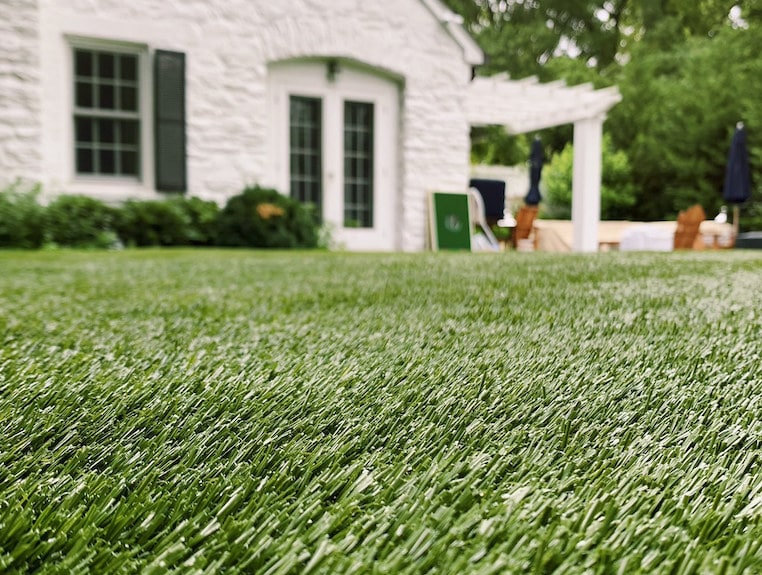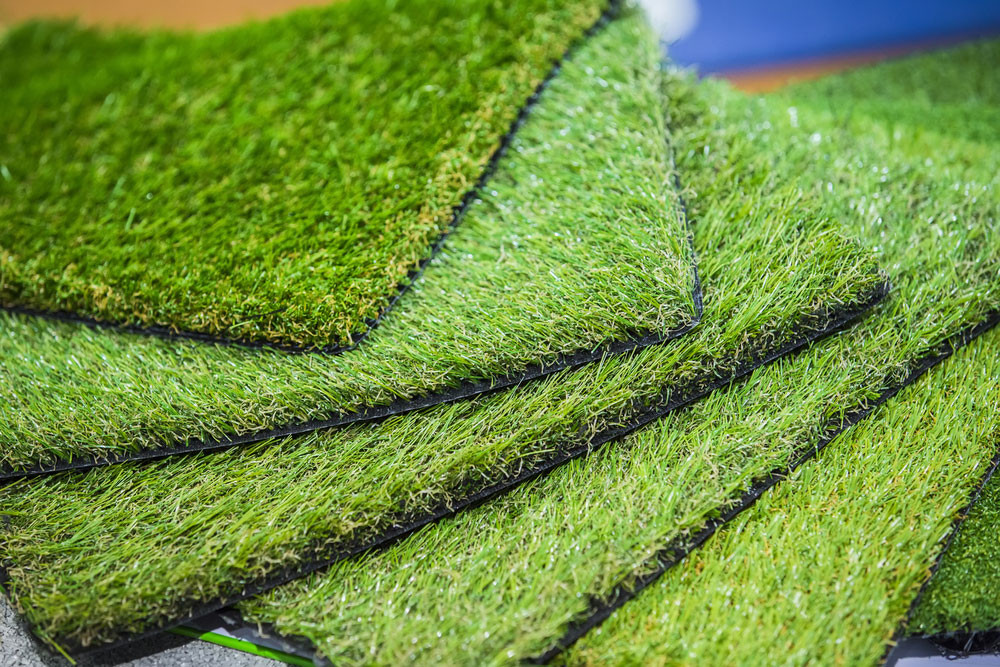Delve Into the Environmental Perks of Opting for Synthetic Grass Solutions
The adoption of artificial grass solutions presents a compelling chance to attend to pressing environmental difficulties. By substantially lowering water use and decreasing the application of damaging chemicals, these options not only advertise sustainable landscape design yet likewise safeguard regional environments.
Water Preservation Conveniences
Among one of the most substantial benefits of synthetic grass is its capability to preserve water. Conventional lawn lawns call for considerable irrigation, particularly in areas prone to drought or water constraints. In comparison, man-made lawn does not require watering, dramatically decreasing the total need for water resources. This function is especially advantageous in deserts where water shortage is a pushing worry.
By getting rid of the need for routine watering, fabricated turf adds to sustainable landscape methods and aids minimize the ecological impact of excessive water consumption. In addition, the preservation of water includes the reduction of runoff, which can lead to soil disintegration and river pollution.
In addition, the installation of synthetic grass permits homeowners and districts to allot water sources extra successfully, focusing on crucial uses such as drinking water and agriculture. The shift in the direction of synthetic grass not only promotes liable water usage but additionally aligns with broader environmental objectives targeted at preserving all-natural resources.
As communities increasingly prioritize sustainability, the water conservation benefits of artificial lawn present a compelling case for its fostering in industrial and domestic landscaping jobs.
Reduced Chemical Use
The change to synthetic grass considerably lowers the reliance on chemical therapies generally utilized in all-natural yard maintenance. Traditional turf management usually entails the application of pesticides, plant foods, and herbicides to promote growth and control pests. These chemicals can pose risks to human health, neighborhood wildlife, and the setting, adding to soil and water contamination.
In contrast, artificial turf eliminates the demand for these damaging materials. By lessening the release of artificial compounds into the environment, fabricated lawn advertises healthier dirt and water systems.
In addition, the lack of chemical runoff linked with synthetic lawn setups assists safeguard neighborhood rivers from contamination, supporting aquatic life and maintaining biodiversity. Phoenix turf companies. As communities progressively prioritize sustainable practices, selecting synthetic lawn offers a viable service that straightens with ecological conservation objectives. Through this change, homeowner can delight in rich green rooms without compromising ecological wellness, leading the way for a much more lasting future
Reduced Carbon Footprint

Moreover, the installation of synthetic grass can cause substantial water conservation. All-natural grass need significant amounts of water for watering, which not only includes in the carbon footprint connected with water extraction and treatment however also stress regional water sources. On the other hand, synthetic grass requires minimal maintenance, requiring no watering, consequently significantly minimizing water use and its connected power expenses.
Additionally, the durability of artificial grass adds to its decreased carbon effect. With a life-span of up to 15 years or more, the demand for regular replacements is reduced, leading to much less waste and lower power intake in production and taking care of conventional yard alternatives. Generally, synthetic grass presents a lasting alternative for eco mindful landscaping.
Habitat Conservation
Environment preservation is an essential consideration in the dispute over landscaping selections, especially when comparing artificial lawn to natural lawn. All-natural grass yards frequently call for comprehensive upkeep, including using herbicides, plant foods, and pesticides, which can adversely influence local ecological communities. These chemicals can seep into the dirt and waterways, damaging native plants and fauna and interrupting neighborhood habitats.
Fabricated grass gets rid of the requirement for damaging chemicals, consequently securing neighboring wildlife and preserving the stability of surrounding ecosystems. The setup of fabricated grass can lead to the conversion of previous turf areas into more biodiverse landscapes, such as pollinator gardens or indigenous plant locations, which can sustain regional wild animals.
Eventually, the change to synthetic turf not just saves water and minimizes maintenance initiatives yet additionally promotes a much more harmonious partnership between human activities and the all-natural environment, advertising environment preservation in the process.
Long-Term Sustainability
Lasting sustainability is an essential consider evaluating the benefits of synthetic grass over typical lawn yards. One of one of the most considerable benefits of synthetic grass is its sturdiness; it can last approximately 15-20 years with very little maintenance, whereas all-natural grass calls for regular reseeding and substitute. This longevity minimizes the demand for constant sources, such as water, plant foods, and pesticides, which are crucial for keeping a healthy yard yard.
Furthermore, synthetic grass adds to a decrease in carbon emissions connected website here with yard treatment equipment. Typical lawns commonly require gas-powered lawn mowers, leaners, and blowers, every find here one of which add to air pollution. Turf installation phoenix az. In contrast, synthetic grass eliminates the need for such devices, promoting a cleaner setting
Moreover, the manufacturing of synthetic grass progressively utilizes recycled products, boosting its sustainability account. As manufacturers take on environment-friendly methods, the ecological impact of fabricated lawn remains to lessen.

Conclusion
The fostering of artificial lawn remedies provides significant environmental benefits, including considerable water conservation, decreased reliance on hazardous chemicals, and a reduced carbon impact. Synthetic grass aids in protecting natural environments by minimizing land disturbance and advertising long-lasting sustainability with the usage of durable products. Collectively, these elements emphasize the possibility of man-made grass to contribute favorably to environmental wellness and supply a feasible alternative to standard landscape design practices in a progressively resource-conscious world.
In contrast, fabricated lawn does not require watering, considerably reducing the general demand for water sources. By decreasing the launch of synthetic substances right into the ecosystem, synthetic grass advertises much healthier dirt and water systems.
Moreover, the installation of synthetic lawn can result in substantial water preservation. In comparison, fabricated lawn needs minimal upkeep, calling for no watering, therefore significantly decreasing water use and its connected energy costs.
